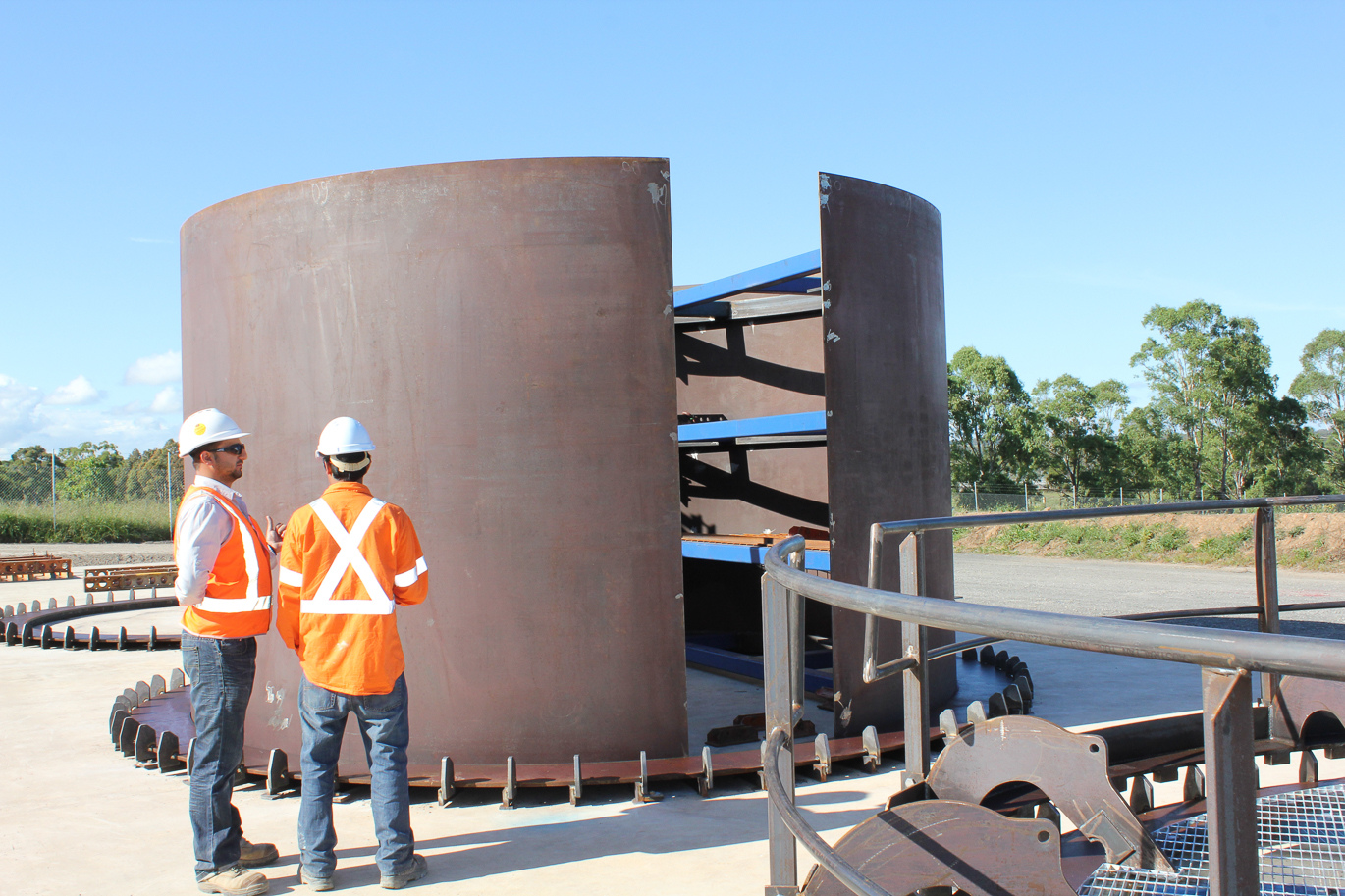deep drilled ventilation shaft
hydrostatic liner segments installed
process water treated
year service life
Operated by a mining company in the Southern Coalfields, the expanding mine required a new ventilation shaft and associated infrastructure. The Southern Coalfields Ventilation Shaft (SCVS) was constructed 45km northwest of Wollongong. With a 5m finished diameter (6.2m drilled), this shaft became the largest of its kind ever blind bored in Australia, reaching a depth of 523m.
The completed shaft was smooth and fully lined with steel/concrete composite liners that were hydrostatically sealed and designed to meet ventilation requirements for a service life of 20 years.
Scope of works
The scope of work included:
- Detailed design, methodology and specification preparation for all aspects of construction of a blind-bored ventilation shaft to a depth of 523m.
- Surface works to facilitate construction and lining of the shaft, including electricity supply, process water supply, and earthworks for settling ponds required for the reverse circulation process.
- Construction of on-site facilities to precast and cure composite steel and concrete shaft lining segments.
- Pre-sink excavation and FRP concrete construction of the complex shaft collar, footings for shaft ventilation mechanical equipment, and work platform for the blind bore drilling rig.
- Installation of composite concrete/steel lining segments, grouting, and sealing to create a hydrostatic, maintenance-free surface.
- Design, construction, and operation of a temporary chemical dosing and flocculation system to treat large volumes of process water to a standard suitable for discharge at project completion.
Effective water treatment and safety
The Bladhill Claystone layer near the surface served as a barrier between two groundwater systems, which gave potential for a high water flow into the drilled shaft. At depths below 400m, there was a risk of stress-induced spalling failure in the shaft walls as drilling passed through the Stanwell Park and Wombarra claystone layers and the Coal Cliff Sandstone strata. The shaft design and drilling methodology thoroughly addressed these and other issues.
After completing the drilling and lining process, 18 million litres of silt-laden process water needed treatment to meet discharge standards for local waterways. A temporary chemical dosing and flocculation plant was set up, and the drilling water was passed through a centrifuge. This treatment effectively reduced turbidity levels to below discharge limits.
Abergeldie received a “Safety Champion Award” from the client for the site establishment, pre-sink, and FRP concrete construction work elements of the project, in recognition of incident-free operations and strict adherence to active mine safety procedures.
Recycling materials
Approximately 100t of steel was recycled from the project. All waste oils were recycled, and the drilling process water was treated to stringent environmental standards to meet EPA license conditions for water quality.


